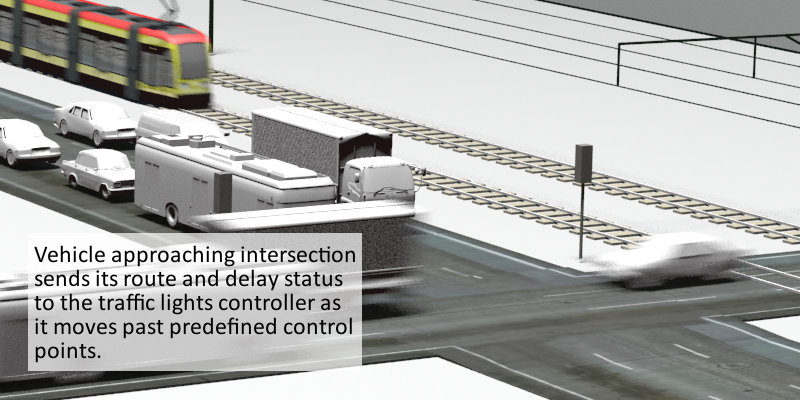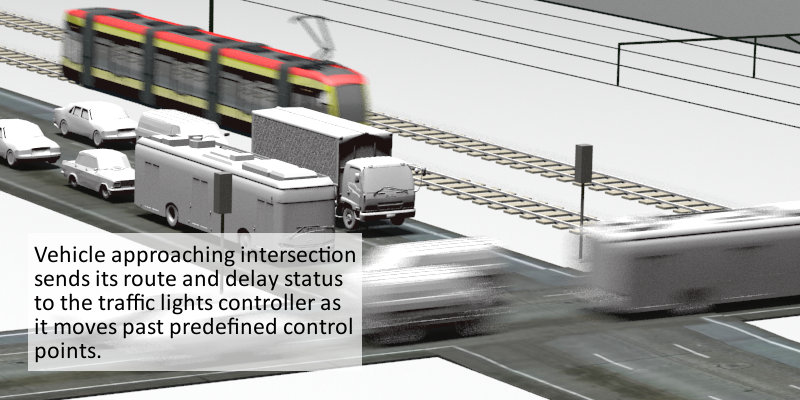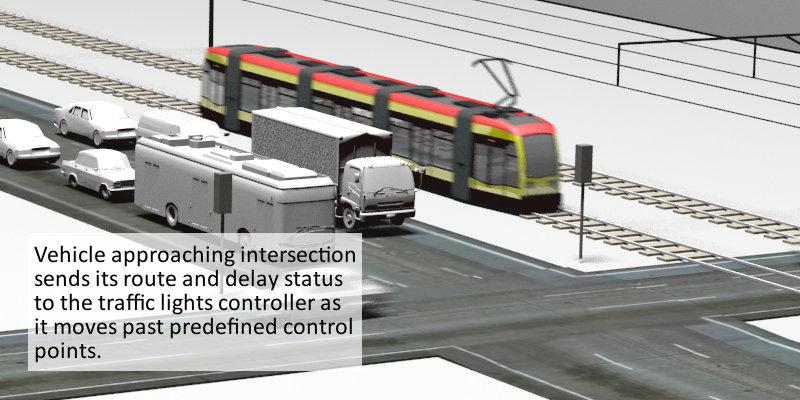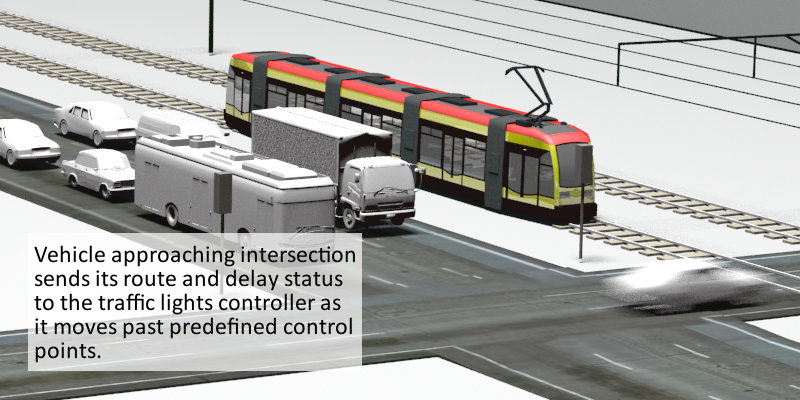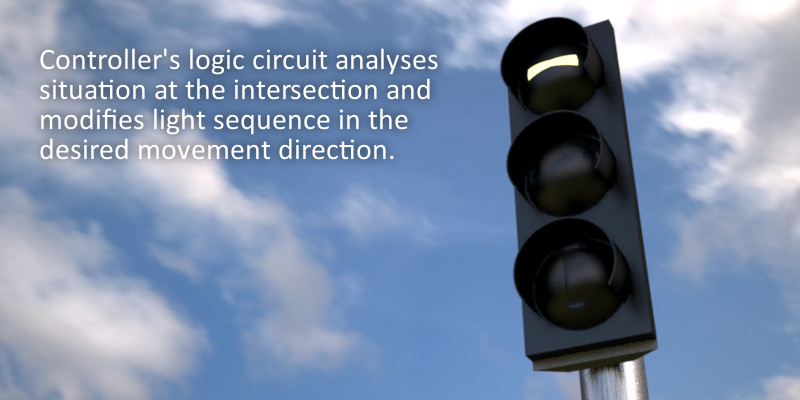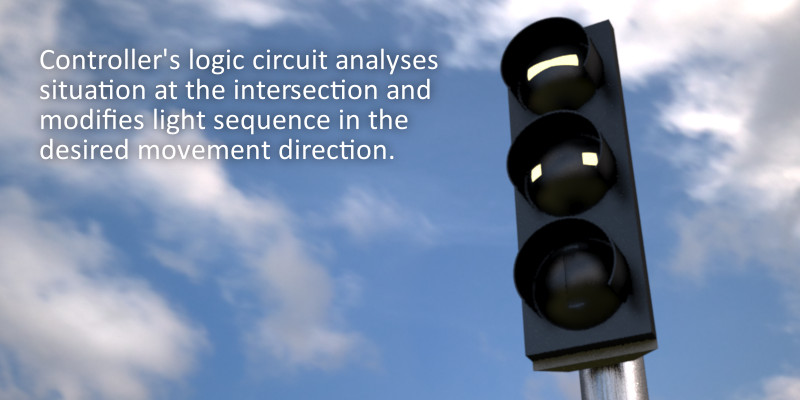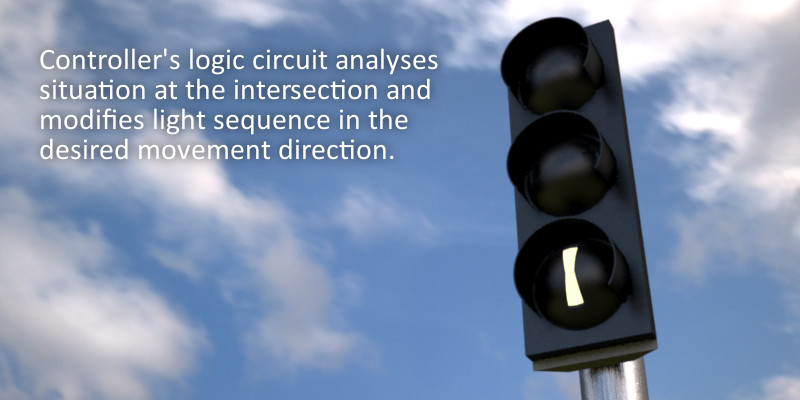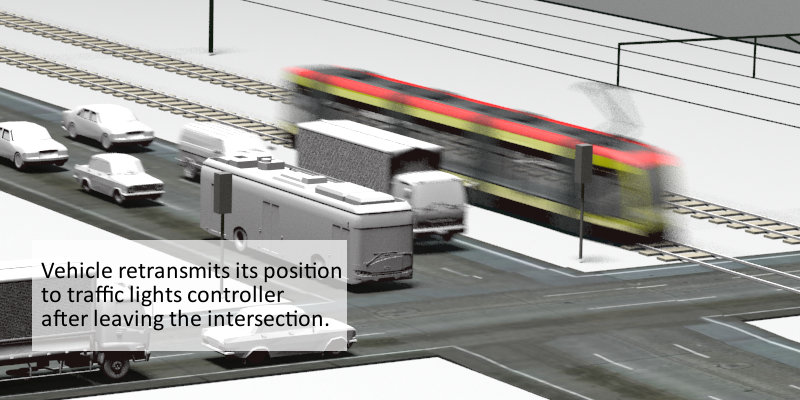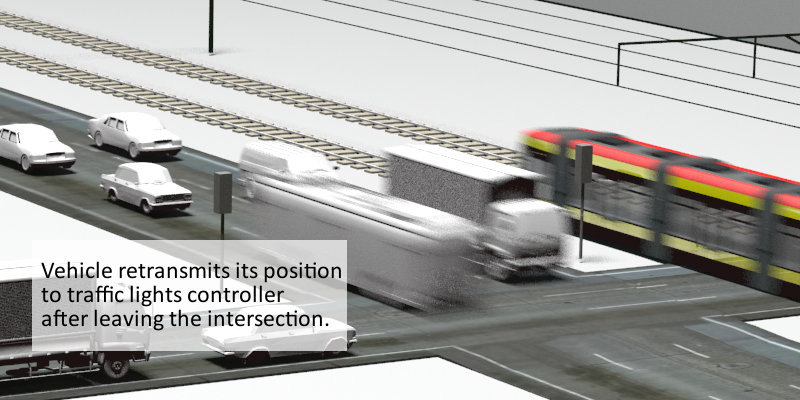Traffic Light Priority
Public transportation is perceived as being attractive to the passengers, when it's fast, punctual, and vehicles move in optimal way across the transportation network area. Time based analysis performed in different cities proved that waiting for the right traffic signal takes more than 30% of the whole journey time. Traffic light priority for trams and buses significantly improves their movement and punctuality.
Presented system helps vehicles to drive through an intersection where traffic is controlled by light signals. Vehicular unit sends a series of messages to traffic light controller with information about its route and vehicle status. Priorities assigned on different cross-roads make it possible to shorten the total ride time, what leads to lower company's outlay and increased passengers satisfaction.
Information from the vehicle is sent twice or thrice when it moves past defined control points. Controller's logic circuit analyses received information from every vehicle that occur near the crossing, and modifies light sequence by advancing or retarding their time on desired movement direction. After the vehicle leaves the junction, the vehicular unit sends information to the controller one more time.
Traffic light priority system in cooperation with SNRP has many advantages:
- The same vehicular unit that is primarily used for voice communication with dispatch center is used for traffic signal priorities.
- SNRP helps to localize the signal transmission spot (control point) precisely - vehicles receive green light exactely when they need one.
- It is possible to give priority to specific vehicles only (e.g. only to delayed ones), what makes deviations from the schedule equal to all the trams.
- Priority signals are sent automatically, without any action needed from the driver.
For communication with traffic light controllers we use TX-U-100 transmitters of our own production.
TX-U-100
TX-U-100 is a single-channel low-power radio transmitter operating in 400-470 MHz frequency range with narrow-band frequency modulation.
TX-U-100 is designed for installation in public transport vehicles and communicates with on-board computer via RS-232 interface. TX-U-100 receives from the on-board computer data such as: location, line / brigade and deviation from the timetable.
TX-U-100 accepts wide range of input voltages and is fully protected against reverse polarity and no output load on the antenna connector.
The transmitter can be manufactured in autonomous version with integrated GPS, allowing installation in any vehicle, e.g. in emergency vehicles. In this version, the operation of the transmitter can be optionally activated by the driver via a special button.
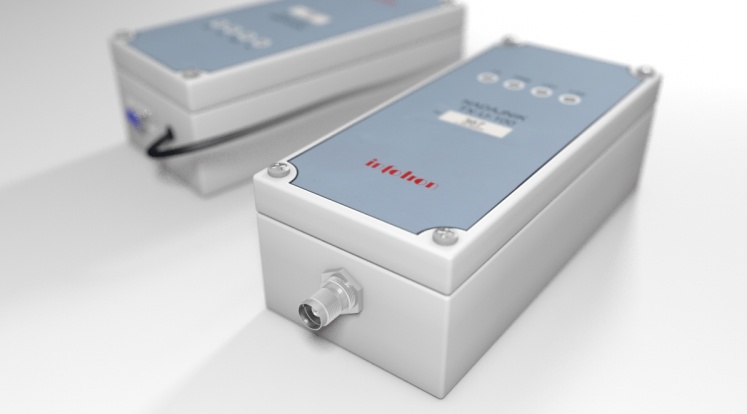
Specifications:
| Input voltage range Frequency range Output power Modulation type Emissions level Connectors Dimensions Ingress protection Operating temp. range Communication protocol |
11-60V DC max 0.5 A |



